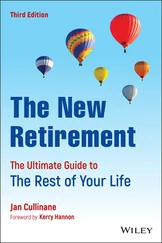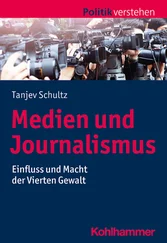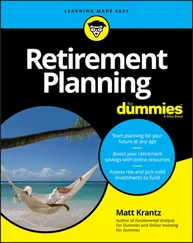Thus, despite all the talk about the burden of longer life spans, employers that pay out pensions in lump sums actually face none at all: The longevity risk has been passed on to the retirees.
Lumps sums provided employers with yet another benefit. Companies used them to secretly cut pensions even as people walked out the door. The mechanism was simple: If someone’s pension, converted to a lump sum, was worth $400,000, the employer could offer a lump sum worth, say, $350,000. How can this be legal, given anti-cutback rules?
Simple: Companies didn’t tell employees that the lump sum was worth less, and employees couldn’t tell. But as long as the employee chooses the lump sum—unknowingly cutting his own pension—the anti-cutback law hasn’t been violated. (A key reason the lump sums are smaller is that they might not include the value of any early-retirement subsidy, which can be worth 20 percent or more of the total value.)
Few employees would knowingly give up tens of thousands of dollars’ worth of pension, but unless employers provided apples-to-apples comparisons of the actual values of the monthly pension and the lump sum, there was no way to compare. In 1999, Mary Fletcher, a marketing services trainer and fourteen-year veteran of IBM, had to decide between taking a lump sum and a monthly pension when IBM sold a unit with three thousand U.S. employees to AT&T. She hired an adviser who calculated that while the monthly pension would be worth $101,000 if cashed out, the lump sum IBM offered Fletcher was worth only $71,500. Still, she took the lump sum. Almost all employees do, figuring they can invest the money and eventually end up with more. She was forty-seven and figured she was better off having nothing more to do with the IBM pension plan.
Employee advocates, including the Pension Rights Center and AARP, demanded better disclosure rules, but employers fought back. Lobbyists for the American Society of Pension Actuaries, the ERISA Industry Committee, and the U.S. Chamber of Commerce told Senate staffers that employees would only become confused if they were presented with too much complex information, and that providing more disclosure would be a “daunting task.” Lawmakers didn’t completely buy this, so in 2004 the IRS began requiring employers to tell people more clearly if the value of the lump sum wasn’t equal to the monthly pension.
In 2006, the Pension Protection Act banned wear-away prospectively, meaning that if an employer set up a cash-balance plan after the 2006 law went into effect, it couldn’t include a wear-away period.
But the issue of pension deception is still playing out in the courts. Cigna employees, who hadn’t been told their pensions were essentially frozen when the company changed to a cash-balance plan, sued the company in 2001. In 2008, a federal court concluded that Cigna deliberately deceived its employees when it changed its pension plan in 1998, gave them “downright misleading” information about their pensions to negate the risk of an employee backlash. “CIGNA’s successful efforts to conceal the full effects of the transition to [the new pension] deprived [plaintiffs] of the opportunity to take timely action… whether that action was protesting at the time [the change] was implemented, leaving CIGNA for another employer with a more favorable pension plan, or filing a lawsuit like this one.”
The district court ordered Cigna to restore the pension benefits it had led employees to believe they would be receiving. Cigna appealed to the Second Circuit, and lost, but that wasn’t the end of it. Cigna didn’t try to appeal the court’s finding that it deceived its employees—the memos and documents that surfaced in the case were too damning.
But in a kind of hail Mary pass, Cigna appealed to the Supreme Court, arguing that in order to get the benefits, each individual employee must prove he’d acted on the misinformation–that is, didn’t change jobs or save more money, and thus suffered financial harm.
During oral arguments before the Supreme Court late in 2010, it became clear that the majority of justices were troubled by the fact that if they adopted the “detrimental reliance” standard Cigna was advocating, then employers would suffer no consequences even for the most egregious deception. “Doesn’t this give an incredible windfall to your client, Cigna, or to other companies that commit this kind of intentional misconduct?” Justice Elena Kagan asked Cigna’s attorney. In May 2011, the justices sent the case back to the lower court with instructions that it review its decisions, based on the portion of pension law that requires employers to tell employees, clearly and unambiguously, when it is cutting their pensions.
If the judge comes to the same decision to award the benefits to the employees—a total of $82 million—this would be the biggest award for employees whose employer hid pension cuts.
But Cigna has already taken steps to soften the blow: It froze the pension plan in 2009 and cut health, disability, and life insurance benefits for retirees, giving it a gain of $92 million.
Chapter 3
PROFIT CENTER
How Pension and Retiree Health Plans Boost Earnings
IN ACTUARIAL CIRCLES,there’s a joke that goes something like this: A CFO is interviewing candidates for a job as a benefits consultant. He calls the first one, an accountant, into his office and asks, “What’s two plus two?” The accountant says “Four.” The CFO sends him away, calls an actuary into the room, and asks, “What’s two plus two?” The actuary closes the door, pulls down the blinds, then leans in and whispers, “What do you want it to be?” He gets the job.
As much as this anecdote unfairly maligns the vast majority of actuarial professionals, it nonetheless sums up the view that some in the profession have toward their more aggressive brethren. Until the 1990s, benefits consulting firms generally handled standard pension tasks, like helping companies figure out how much to put into their pension plans, based on the ages and life expectancies of their employees, plus other factors. More closely aligned with the human resources department, they were one of the costs of operating a business, like accountants and the janitorial staff. But over the next two decades, large benefits consulting firms began aggressively marketing themselves to the finance departments. Their pitch? They could help employers turn pension plans into profit centers.
Their primary tools included the new accounting rules [8] The rules, developed by the Financial Accounting Standards Board (FASB), went into effect for large companies in 1987 and a bit later for small employers.
that employers implemented in 1987, which require employers to disclose the size of their pension obligations, as they do other kinds of debts, and show how these pension debts affect income each quarter. Though the new accounting standard, FAS 87, was intended to increase transparency—allowing shareholders to see the full liability on a company’s books—it was the beginning of the end for pensions. Before the new rules went into effect, employers got only one benefit from cutting pensions: The money that would someday have been paid to retirees would instead remain in the pension plan. Under the new accounting rules, employers got a second benefit when they cut pensions: Reducing the liability generated gains. These are paper gains, not cash, but when it comes to calculating earnings, the gains are treated the same as income from selling software or trucks. IBM’s pension cuts in 1999 reduced its pension obligation by $450 million, resulting in a pot of gains worth roughly $450 million that the company could add to income either right away or over time. IBM added $200 million of these gains to its 1999 income.
Читать дальше












